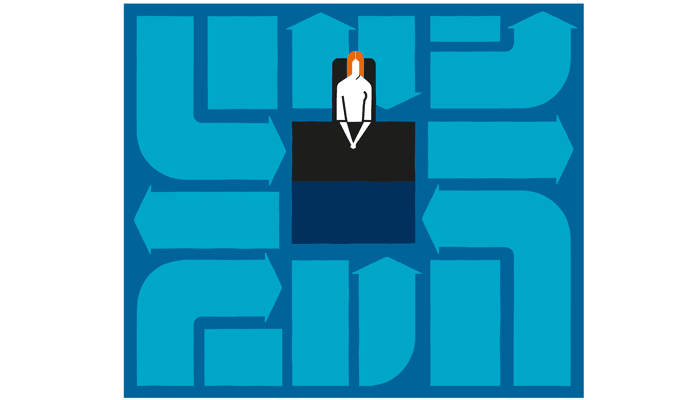Best Business Books 2013: Managerial Self-Help
Influence, Inquiry, Action
(originally published by Booz & Company)
Edgar H. Schein
Humble Inquiry: The Gentle Art of Asking Instead of Telling
(Berrett-Koehler Publishers, 2013)
Daniel H. Pink
To Sell Is Human: The Surprising Truth about Moving Others
(Riverhead Books, 2012)
Sheryl Sandberg
Lean In: Women, Work, and the Will to Lead
(Knopf, 2013)
Business books this year have a lot to say to leaders trying to bolster their reputation and influence. If you want to become more successful in your organization, your best bet is to hone your personal skills and become a more effective practitioner.
Communicating effectively, becoming a more accomplished persuader, and helping others achieve their performance goals have long been foundational managerial roles. But as organizations become more diverse and complex, and as everyone is called upon to work more independently, refining these skills has become an imperative.
Perhaps that’s why listening, questioning, and moving others to act emerged as strong themes in the best business books offering managerial self-help this year, with the latest volumes from veteran authors Edgar H. Schein and Daniel H. Pink being the standouts. Facebook COO Sheryl Sandberg’s hugely successful Lean In complements both by providing a clear example of a leader who demonstrates in action the managerial practices that both men advocate.
Ask, Don’t Tell
Concise, cogent, and informed by a wealth of direct experience, Humble Inquiry: The Gentle Art of Asking Instead of Telling, by Edgar H. Schein, is a testament to the importance of asking questions in a way that enables others to feel comfortable giving honest answers. A pioneer in organizational development whose work has been instrumental in shaping the field since the 1950s, Schein distills lessons from a lifetime of practice in solving difficult organizational problems, helping people build strong relationships, and moving cultures in a positive direction. Simple and profoundly wise, Humble Inquiry, the best business book of the year in this category, has the makings of a classic.
Although the book wears its learning lightly, its ambitions are far from modest, for Schein sets out to do nothing less than identify and address the root causes of miscommunication in our business culture. In his view, there are two essential problems. The first is our preference for telling rather than asking. Schein finds this especially characteristic of managers in the United States, who are immersed in a tradition of pragmatic problem solving that places a premium on efficiency and speed. The second problem is the high value many leaders place on task accomplishment as opposed to relationship building, which can make them impatient with the slow work of earning real trust. In Schein’s experience, many leaders either are not aware of these cultural biases or don’t care enough to be bothered with redressing them.
Schein believes that such attitudes have become newly problematic in a diverse global environment in which a growing proportion of individuals do not necessarily share those values, and in which teams are an increasingly common organizational unit. Despite the prevalence of language exalting teamwork, Schein notes that promotional and rewards systems in many companies remain almost entirely individualistic. This creates an emphasis on star performers that can undermine engagement and trust.
The disjunction becomes particularly acute when leaders simply assume that positional power ensures that their subordinates will correctly interpret and act upon their instructions. Those who take this approach are often content to toss off a pro forma request for assent—“Does anyone have any problems with this approach?”—and leave it at that. Blinded by presumptions about the value of their status and unaware of the cultural and status constraints under which subordinates may labor, leaders intent on speed and efficiency often miss essential information. In high-risk fields, these miscommunications can have catastrophic consequences, against which checklists and professional training offer insufficient protection.
At several points in the book, Schein illustrates the potential for miscommunication by using examples from a typical British hospital. The operating team consists of a British senior surgeon who also works with the royal family, an anesthesiologist recently arrived from Japan, a surgical nurse from the U.S. who’s in the U.K. because of her husband’s job, and a surgical tech from a working-class London district. Though each member of the team is a highly trained professional, these diverse individuals all have cultural reasons to avoid sharing unwelcome information with the surgeon. The anesthesiologist comes from a culture in which those with higher status cannot be openly confronted, so he appears to agree with the surgeon even when his experience suggests another approach. The nurse is sensitive to the anesthesiologist’s status and does not want to embarrass him in front of the surgeon by questioning his decision to go along with whatever the surgeon says. The tech cannot imagine anyone on the team listening to a concern voiced by someone of his background and so fails to offer any views and just follows orders.
Schein describes the various circumstances under which cultural and status constraints inhibit this team from engaging in the kind of frank exchange that their complex work requires. Though each team member has specific expertise, they all fail to use it to advantage unless those with higher status humble themselves by asking questions that demonstrate their reliance on others. He further notes that some variation on this situation occurs in every kind of organization, often every day, because even as leaders struggle to create conditions that promote free exchange, expressing humility can make them feel vulnerable. True humility requires admitting dependence on those lower in the hierarchy. Only when leaders are able to overcome their fear of exhibiting such dependence can they allow their curiosity to lead them to vital information.
Humble Inquiry redresses this condition by showing managers a variety of ways to frame questions to which they do not know the answer. Schein is careful to distinguish humble questions from leading questions, rhetorical questions, embarrassing questions, or statements masquerading as questions. He also notes that the burden for asking such questions always falls on the higher-status person in an exchange. Humble inquiry is therefore especially useful as a management practice.
Like Peter Drucker, Schein rarely cites or draws from work that is not his own, an approach that paradoxically gives his observations added authority and weight. The methods he sets forth have obvious utility in many situations, but seem particularly useful for organizations undertaking complex initiatives such as culture change. In fact, it’s not extreme to say that no leader should attempt such a venture without first consulting Humble Inquiry.
Get Moving
In contrast to Schein’s autodidactic reliance on a lifetime of experiential learning, Daniel H. Pink continues his own tradition of digging up fresh, pertinent, and provocative research to support virtually every point he makes. In To Sell Is Human: The Surprising Truth about Moving Others, he builds a strong, clear case that selling, which he defines broadly as “the ability to move others,” has become an essential managerial practice rather than something that only salespeople do. (See “Daniel Pink’s New Pitch,” by Theodore Kinni, s+b, Autumn 2013.)
In Pink’s view, selling has become integrated into all kinds of work. This is true in part because more people now work as free agents, subcontractors, and entrepreneurs, either on their own or in association with a larger entity, and in part because organizations have become much flatter. Flatness erodes functional boundaries, making job descriptions more elastic. Engineers are “forward deployed” to interact with clients, while computer scientists head into the field to solve customer problems. As a result, the skills of persuasion are needed to support the practice of many kinds of expertise.
Yet even as more of us need to integrate sales skills into our managerial repertoire, the nature of what constitutes skilled selling is changing. For instance, information parity is replacing information asymmetry. Such asymmetry historically gave salespeople and managers an edge. But now, Pink notes, both can benefit by taking the high road—being honest, direct, and empathetic, and seeking to build relationships for the long term. In a transparent world, where we all have the means to research our choices, Pink says, “Moving people depends on more sophisticated skills and requires as much intellect and creativity as designing a house [or] reading a CT scan.”
The core of To Sell Is Human is a lively section titled “How to Be” that spells out Pink’s new ABCs of selling. Instead of “Always be closing,” the traditional sales mantra, Pink posits a new watchword for moving others: “Attunement, buoyancy, and clarity”—an ABC that’s as useful to managers as to salespeople.
Describing attunement, Pink steps into Schein’s territory. He offers research indicating that people with lower status tend to be keener perspective takers, more cognitively attuned to the moods and needs of those with higher status and so better able to discern what will move them. He therefore advocates the strategic assumption of lower status when trying to win someone to your cause. Pink also presents studies upending the conventional wisdom that extroverts are the best at moving others. It turns out that ambiverts—those able to move back and forth between action and reflection—are more skilled at attunement because they’re likely to be better listeners than are extroverts.
Daniel Pink’s examination of buoyancy is fascinating. He notes that being good at moving others requires great persistence as well as an ability to deal with the discouragement that comes as a result of “wave after wave of rebuffs, refusals and repudiations.” How can we stay afloat amid this ocean of rejection? By drawing on three techniques that social science identifies as most vital for resilience.
First, an individual must practice the right kind of self-talk in advance. This is not the stereotypical Og Mandino/Tony Robbins technique of constantly telling yourself how great you are. The opposite tack—saying “I can’t do this”—is, of course, even less effective. What works best, per Pink, is using an interrogative voice before you undertake the task at hand. For example, asking yourself, “Can I make the head of this division understand what we’re up against?” and then listing the reasons you can do it is the most effective way to establish a buoyant spirit. (The corollary is to remedy any reason that you can’t.)
The second step to buoyancy is maintaining a high degree of positivity, a catchall term for a variety of positive emotions. As it turns out, the optimal ratio for tapping into the power of positive thinking is three positive emotions for every negative one. Pink illustrates this principle by following the last Fuller Brush Man, Norman Hall, as he makes his rounds. Pink observes that Hall is careful to start his day with a few calls he knows will be friendly in order to put himself in a positive mood. He also takes time to visit with longtime customers he knows will be glad to see him in order to balance the inevitable situations in which he will be rebuffed or treated rudely. This strategic approach to creating positive experiences can also help managers improve their resilience.
The final step is having the right explanatory style—that is, the kind of story you tell yourself to explain what happened when things go wrong. Pink cites an extensive study showing that people who give up easily tend to explain negative events to themselves as permanent, pervasive, and personal. By contrast, buoyant individuals tend to frame negative encounters as temporary, specific, and external. It’s a great technique for anyone who leads.
Pink’s chapter on clarity is full of aha! moments, deeply rewarding and persuasively written. He describes techniques for developing effective pitches that go far beyond the elevator standard and offers a Schein-like template for asking better questions in order to get better results. Full of fresh information and useful insights, To Sell Is Human is timely, original, thoroughly engaging, and deeply humane.
Get Out of Your Own Way
It’s hard to separate Lean In the book from “Lean In” the phenomenon. In an era when the professed goal of every book, article, and tweet is to start a national conversation, Sheryl Sandberg has succeeded on an unprecedented scale with a subject that is often addressed as a dutiful afterthought. Women’s leadership has been pronounced dead as a topic of interest many times over the last 25 years. Yet with precision, timing, and an extraordinary dedication of resources, Sandberg has revived it.
Lean In: Women, Work, and the Will to Lead combines exhortation, analysis, and memoir in addressing the question of why so many women who start their careers with high potential and high hopes fall behind as the years progress, resulting in a continuing paucity of women in senior positions. Until recently, this was widely attributed to the lack of a “pipeline,” a problem that, it was assumed, would resolve itself once enough women were hired into management. This has not happened.
Although Sandberg recognizes that substantial extrinsic obstacles stand in the way of women’s success (organizational culture, blatant and subtle discrimination, and, of course, child-care issues), she’s also convinced that internal obstacles (issues related to women’s own thinking and behavior) play a role. This is what she sets out to examine, drawing on her own experience and that of other women. She buttresses her observations with well-integrated academic research on such issues as how success and likability are correlated in women (negatively, as it turns out), differences in how men and women perceive their own qualifications for advancement (men rate themselves more highly even in cases where women significantly outperform them), and how men and women perceive their employability (dishearteningly, women apply for open jobs only if they think they meet 100 percent of the criteria listed, whereas men apply if they meet 60 percent of the requirements). Such data makes it difficult to argue with Sandberg’s central thesis that women’s tendency to question their own skills often plays a role in limiting their opportunities.
The Facebook executive freely admits that she has made every mistake she discusses and tells her own story with refreshing candor. For instance, when Larry Summers, her mentor and thesis advisor at Harvard, recommended she apply for an international fellowship, she ignored the advice because she feared it would make it harder for her to find a husband. Later, working for Summers at the World Bank, she made up for this strategic error by taking to heart his advice that she “bill like a boy.”
Sandberg went on to serve her mentor as chief of staff when he was at the U.S. Treasury during the Clinton administration. There, she became intrigued by the tech industry’s rapid growth. She joined Google in 2001, quickly became its vice president for global online sales and operations, and jumped ship in 2008 to become Facebook’s chief operating officer.
Sandberg demonstrates a gift for self-awareness that avoids both self-adulation and false modesty. She admits she didn’t know how to read a spreadsheet when she arrived at the World Bank and describes humiliating moments when she made poor decisions, received withering feedback, or even cried. Although she’s been criticized for these admissions by those who believe successful women must always inhabit the straitjacket of the unvaryingly positive role model, her honesty has stood her in good stead, both in her career and in the warm persona that animates the book.
Although “Sheryl Sandberg blames women” has become a popular media meme, Lean In seems to me to be a valiant attempt to turn what the author has learned into a clear-eyed guide for helping other women succeed at work. In addition, the self-awareness that informs her managerial style, at least as she describes it, exemplifies the practices that Schein and Pink both advocate and explore. She expresses humility and is not reluctant to assume a lower-status position if she has something to learn. She’s a skilled questioner who actively shows that she is listening so others will be comfortable opening up. She credits her success to recognizing that truth lies in the eye of the beholder and that statements of fact are therefore likely to put others on the defensive. She acknowledges that listening and being open were hard skills for her to learn and says she has to work at being “delicately honest.”
If we’re all salespeople now, Sandberg clearly possesses the passion for inquiry along with the attunement, buoyancy, and clarity required to move others to pursue a cause that has long been regarded as a tough sell. ![]()
Author profile:
- Sally Helgesen is a contributing editor of strategy+business. She is an author, speaker, and leadership development consultant whose most recent book is The Female Vision: Women’s Real Power at Work (with Julie Johnson; Berrett-Koehler, 2010).







